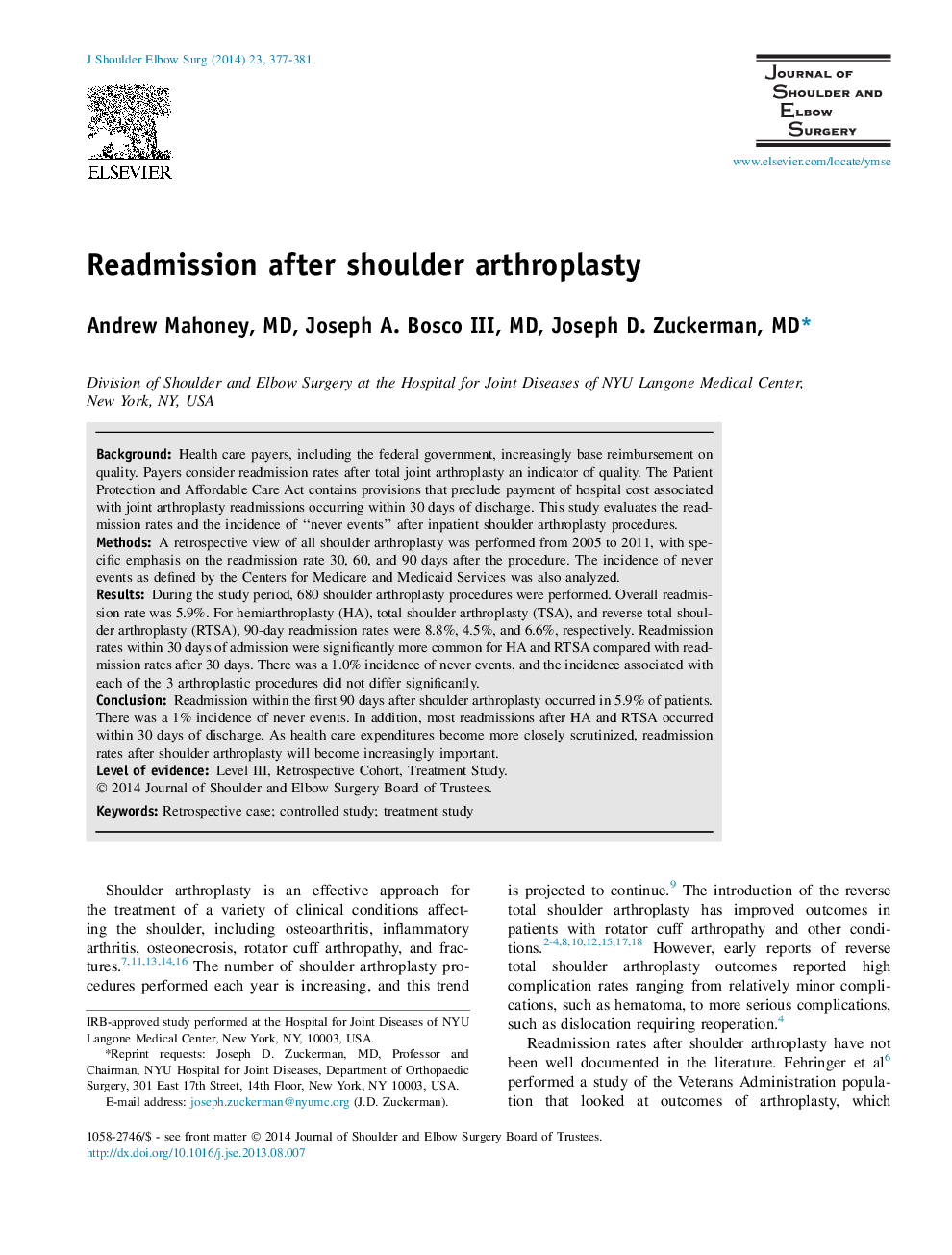| Article ID | Journal | Published Year | Pages | File Type |
|---|---|---|---|---|
| 4073707 | Journal of Shoulder and Elbow Surgery | 2014 | 5 Pages |
BackgroundHealth care payers, including the federal government, increasingly base reimbursement on quality. Payers consider readmission rates after total joint arthroplasty an indicator of quality. The Patient Protection and Affordable Care Act contains provisions that preclude payment of hospital cost associated with joint arthroplasty readmissions occurring within 30 days of discharge. This study evaluates the readmission rates and the incidence of “never events” after inpatient shoulder arthroplasty procedures.MethodsA retrospective view of all shoulder arthroplasty was performed from 2005 to 2011, with specific emphasis on the readmission rate 30, 60, and 90 days after the procedure. The incidence of never events as defined by the Centers for Medicare and Medicaid Services was also analyzed.ResultsDuring the study period, 680 shoulder arthroplasty procedures were performed. Overall readmission rate was 5.9%. For hemiarthroplasty (HA), total shoulder arthroplasty (TSA), and reverse total shoulder arthroplasty (RTSA), 90-day readmission rates were 8.8%, 4.5%, and 6.6%, respectively. Readmission rates within 30 days of admission were significantly more common for HA and RTSA compared with readmission rates after 30 days. There was a 1.0% incidence of never events, and the incidence associated with each of the 3 arthroplastic procedures did not differ significantly.ConclusionReadmission within the first 90 days after shoulder arthroplasty occurred in 5.9% of patients. There was a 1% incidence of never events. In addition, most readmissions after HA and RTSA occurred within 30 days of discharge. As health care expenditures become more closely scrutinized, readmission rates after shoulder arthroplasty will become increasingly important.
